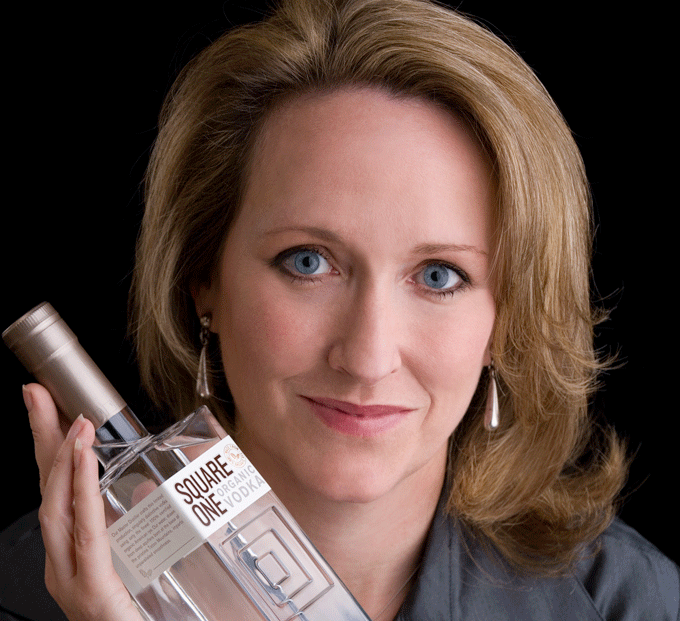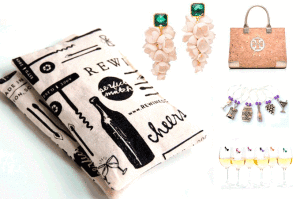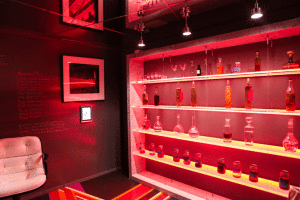This week, many of us are spending some time in the kitchen. We’re slicing, dicing and combining delicious flavors into festive dishes to share with friends and family. And to ensure that our holiday meals turn out just right, we’ve chosen the freshest, most aromatic ingredients available. If we’re lucky enough to live in a warmer climate, some of those ingredients may have even come straight from our garden.
According to Allison Evanow, founder of Novato, Calif.,-based Square One Organic Spirits, this creative impulse lies behind everything culinary—whether it’s served on a plate or in a cocktail glass.
When Evanow launched her vodka company in 2006, her goal was to design a spirit that inspired “culinary cocktails”—drinks that are both savory and sweet, that incorporate essential flavors from the garden and meld them in unexpected ways. Encouraged by the food revolution that had begun in northern California, she created America’s first organically grown, organically fermented, 100-percent rye vodka—to mouth-watering results.
Since its debut, Square One has expanded its product lineup to five unique spirits and spread its distribution to almost every U.S. state and a growing list of international markets. And the company continues to advocate environmentally responsible practices, beginning with production at its organic rye farms in the northwest American plains and continuing with organic fermentation at a nearby wind-powered distillery. The company’s product packaging, labels and shipping containers are made with environmentally friendly and renewable sources, and marketing materials are sourced from “green” agencies and printed with soy-based inks on recycled paper. Square One sells organically too, choosing to build relationships with discriminating bars and restaurants rather than spending a small fortune on advertising.
Here, Evanow talks to Red Typewriter about the art of culinary cocktails, the pros and cons of being a chick in a male-dominated industry, and the myth of women and chardonnay. As a special holiday treat for our readers, she also shares her favorite party drink recipe.
[As yet another holiday gift—and because Evanow is so fun and compelling—we’re serving up six Q&As instead of the regular five.]
RT: We’ve read that you began your career behind the bar. How did mixing drinks inspire you to create your own vodka?
AE: Working as a bartender while attending graduate school gave me an excellent understanding of hospitality and how people like to enjoy their cocktails, wine or beer. At the time, I really didn’t expect that the basic cocktail mixing skills I learned would become so much a part of my life. I do remember, though, being disappointed in how basic—and quite frankly, boring—cocktails were back then. I’m what you would call a foodie; I’m intrigued by the complexity of flavors you can build in a dish. It’s the same creativity I’ve found in spirits and cocktails—from the unique qualities of each spirit, the layering of ingredients for creating the cocktail, and the glassware and garnish itself. These things combined have always captured my imagination. So possibly my understanding of all this started in those grad-school days behind the bar, when I sought to make cocktails that were more interesting than what people were ordering back then.
RT: Does being a woman in a male-dominated industry allow you to bring a unique perspective to the field? Are there any challenges or advantages to being female?
AE: I wasn’t consciously targeting women when I developed the product line, but I did bring a female sensibility to our spirits. Often, the stereotype is that women want sweet, fruity drinks, and while there’s definitely an audience for this type of drink, [there weren’t many cocktails out there that offered] a depth of flavor and didn’t need sugar to elevate them. I distinctly remember talking to several distributors, whose management was all men, about the upcoming launch of Square One Cucumber. None of them understood what cucumber-infused vodka could bring to cocktails and many said it was odd to make a vegetable-infused vodka. I suggested that they ask the women they know about the idea. I wasn’t surprised when the men came back and [reported that women] thought cucumber vodka was a brilliant idea and related it to “Spa Water.” I honestly think it took being a woman to come up with some of our spirits, because women have a more refined palate than some of the more popular producers have recognized.
Also, on occasion people are surprised that I started the company myself—without my husband or another male counterpart. But that reaction has never deterred me, and sometimes when I’m meeting a female buyer I’ve actually benefitted—because these women know how few of us there are in this predominantly male industry.
RT: You’ve said one of your goals is to restore vodka to the status is enjoyed in centuries past. What does that mean to you?
AE: Many people in the U.S. are familiar with vodka as a tasteless spirit that will mix with anything. But originally, particularly in Russia and Poland, vodka wasn’t heavily distilled and filtered to be stripped into a flavorless spirit. Rather, it was enjoyed neat, with the subtleties of the base grain influencing the taste experience. Among grains, rye is the densest and most flavorful and offers the most complexity to the spirit. Because our rye is organic, we don’t need to filter multiple times to remove impurities. We only filter once, so when the vodka is sipped neat, you get the subtle richness of the rye. When it’s mixed in cocktails, the body of the spirit actually lifts up and enhances the other ingredients in the cocktail.
RT: As the mixology trend continues to gain momentum, your company is touting the concept of culinary cocktails. How do these differ from “regular” cocktails?
AE: Culinary cocktails refers to applying the same layering of flavors and culinary ideas you find in the kitchen and bringing them to the cocktail bar. In our cocktail recipes, you’ll find fresh pressed citrus and muddled herbs instead of the artificially colored and flavored ingredients often found in the mixer aisle. Once you enjoy cocktails with these savory and complex flavors, you’ll find that your choices of cocktail favorites will expand as well. Even simple cocktails, like a vodka gimlet, are transformed when you use fresh lime juice and agave nectar, and throw a torn basil leaf into the mixing tin.
RT: These days, do you see more women moving away from the Chardonnay and toward spirits? If a typical wine drinker wants to dabble in cocktails, how should they start?
AE: I’ve heard, anecdotally, that many female white-wine drinkers are starting to drink cocktails again. Like me, many had disappointing experiences with cocktails that were mixed with artificial ingredients or were too sweet—overall, the quality was far below that of a decent glass of white wine. So for a lot of women, the choice of white wine over cocktails was a quality decision more than a particular preference for wine. Now that more mainstream bars and restaurants are making better cocktails, a lot of women tell me they’re happily trying them again. For anyone beginning to transition from white wine to cocktails, I recommend choosing the lighter spirits, because sometimes aged spirits come off as too strong. Choosing quality vodkas, gins, white rums and white tequilas with fresh citrus as their base is a great way to start. The flavors will usually not overpower, and a citrus base will bring a refreshing quality [that’s reminiscent of] sipping chilled white wine.
RT: What’s your favorite way to serve (and drink!) vodka at home?
AE: If I’m drinking our straight organic rye vodka, I’m a purist. I love it served up stone cold, with just a touch of either Dolin Blanc or Lillet Blanc instead of the traditional dry vermouth. And garnished with an orange twist instead of lemon! If I’m drinking one of our botanically infused spirits, I usually muddle in some fresh herbs, fresh citrus and perhaps a little bit of a liqueur, amaro, or a shrub or wine-based aperitif to add complexity. I drink it tall on the rocks with a splash of bubbles of some kind—usually club soda.
As a special holiday treat for Red Typewriter readers, Allison shared the recipe for her latest go-to party cocktail. Happy Holidays!
A Winter’s Tale
1.5 ounces Square One Bergamot
1 ounce red vermouth
1/2 ounce pomegranate juice
1/2 ounce fresh lemon juice
1/4 ounce agave nectar or simple syrup
2 star anise pods
club soda
Muddle star anise pods in a cocktail tin, add all other ingredients except club soda, and shake briefly with ice. Using a tea strainer to capture the star anise bits, double strain into short rocks glass filled with ice and top with a splash of club soda. Garnish with an orange twist and pomegranate pearls.


























